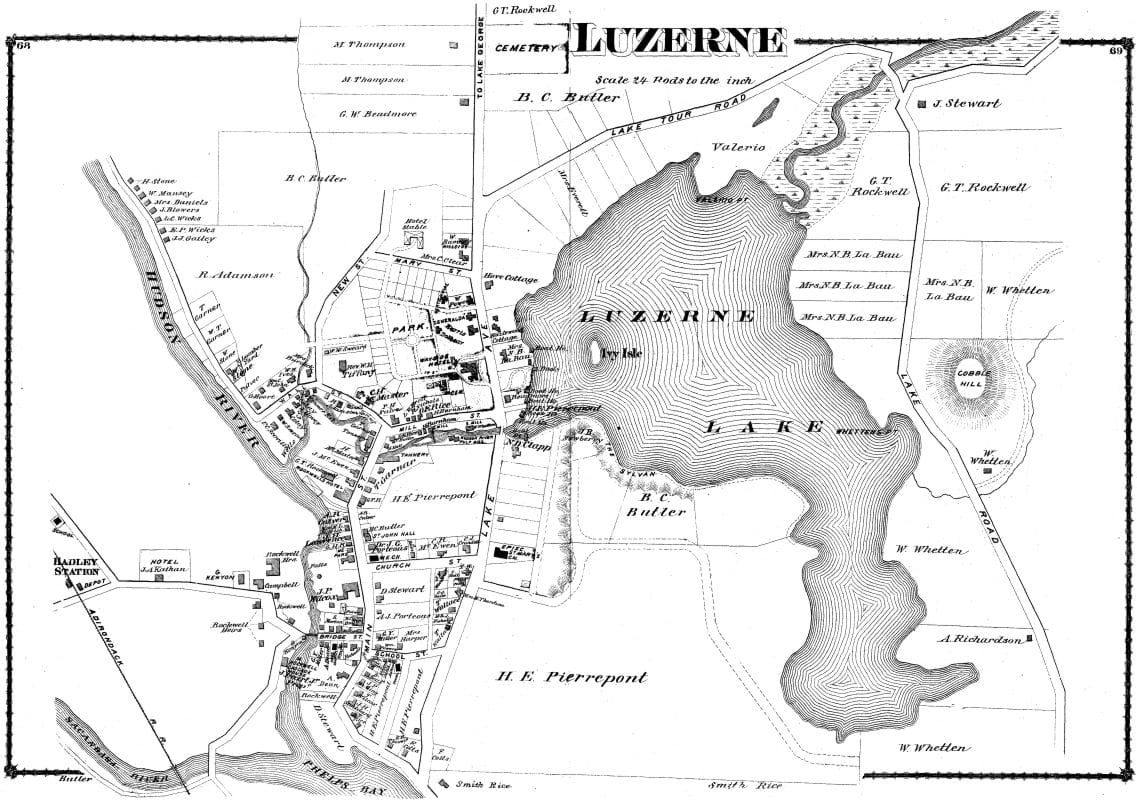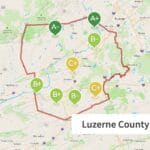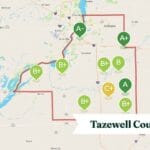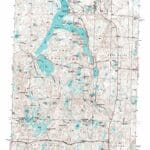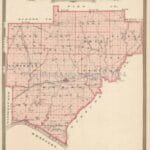Your Guide to Luzerne County GIS: Maps and Data Made Easy
Luzerne County’s Geographic Information System (GIS) offers a wealth of information about the area, presented through interactive maps. This guide provides step-by-step instructions on how to access and use these valuable resources, from finding property lines to requesting custom maps.
Getting Started with the Map Viewer
Access the Portal: Open your web browser and go to the Luzerne County GIS portal: gis.luzernecounty.org.
Initial Pop-up: You may encounter a “PLEASE READ THIS FIRST” window. Review it for important information regarding site usage. (Screenshot of pop-up window)
Navigating the Map: Use the “Extent Navigator” to zoom in and out, similar to other online map platforms. (Screenshot highlighting Extent Navigator)
Searching for Locations: Enter an address or place name in the “Search Bar” to pinpoint a specific location. (Screenshot highlighting Search Bar)
Exploring and Understanding Data Layers
Accessing the Layers List: Locate the layers list, typically found on the side of the map viewer. (Screenshot showing Layers List)
Turning Layers On and Off: Click on a layer’s checkbox to toggle its visibility. For example, activate the “Parcels” layer to view property boundaries or the “Roads” layer to see road networks. (Screenshot showing how to toggle layers)
Understanding Data Representation: Each layer corresponds to a specific dataset. The “Parcels” layer displays property lines, the “Zoning” layer reveals zoning regulations, and so on. (Screenshot showcasing different layers and their corresponding features)
Example Use Case: A real estate agent could enable the “Parcels,” “Zoning,” and “Schools” layers to gain a comprehensive overview of a property and its surroundings. (Screenshot of this combined layer view)
Requesting Custom Maps
Finding the Request Form: Look for a “Data Request” or “Map Request” link on the Luzerne County GIS website.
Filling Out the Form: Specify your requirements, including the area of interest, desired layers, and output format (digital or printed). (Screenshot or mock-up of the request form)
Understanding Potential Fees: Custom map creation may involve a fee. Consult the Luzerne County fee schedule for current pricing. (Link to the fee schedule, if available)
Troubleshooting Tips
- Map Not Loading: Refresh the page or check your internet connection.
- Missing Layer: Ensure the layer is enabled in the layers list.
- Search Issues: Verify the spelling and formatting of the address or place name.
Frequently Asked Questions (FAQs)
- Q: Is Luzerne County GIS data free? A: Accessing the online map viewer and basic data is free. Custom maps and specific data requests may incur fees.
- Q: How often is the data updated? A: Update frequencies vary by dataset. Refer to the metadata for each layer for specific details.
- Q: Can I download data? A: Data download availability depends on county policies and specific datasets. Look for a “Download” option or contact the GIS department for assistance. (Contact information for the GIS department)
Other Useful Resources
While the Luzerne County GIS portal is the primary source for local data, additional resources like CountyOffice.org and NEPA GIS may offer supplementary information. (Remember that these are third-party resources.)
Free GIS Resources: Options Beyond Luzerne County
Luzerne County provides several free GIS access points:
- Online Portal: Access property lines, owner names, and parcel IDs via gis.luzernecounty.org.
- Public Terminals: Use courthouse terminals for free access to basic and premium datasets during business hours (Monday-Friday, 9:00 AM to 4:15 PM, excluding holidays).
Beyond Luzerne County, explore free options like QGIS, GRASS GIS (open-source software), online GIS platforms (with limited features), and public data sources like OpenStreetMap. See the table below for a quick overview:
| GIS Option | Description | Cost |
|---|---|---|
| Luzerne County Portal | Basic property information (lines, owners, parcel IDs) | Free |
| Premium Data (Luzerne) | Enhanced data layers (soil, floodplains, zoning) – contact the county for pricing. | Paid |
| Courthouse Terminals | Free access to basic and premium data. | Free |
| QGIS/GRASS GIS | Powerful, open-source desktop GIS software. | Free |
| Online GIS Platforms | Simplified web-based platforms for beginners and small projects, often with premium options. | Free/Freemium |
| Public Data Sources | Free data from sources like OpenStreetMap and government portals. | Free |
Understanding GIS Data Collection
GIS gathers two main data types: spatial (location) and attribute (characteristics).
Spatial Data:
- Coordinates: Latitude and longitude pinpoint locations.
- Vector Data: Represents features as points, lines, and polygons.
- Raster Data: Uses a grid of cells (pixels) to represent continuous data like elevation or temperature.
Attribute Data:
Provides descriptive information about features:
| Attribute Category | Examples |
|---|---|
| Identification | Names, addresses, parcel numbers |
| Demographics | Population, age, income levels |
| Land Use | Residential, commercial, industrial, agricultural |
| Environment | Soil types, wetlands, elevation |
| Infrastructure | Road conditions, pipe diameters, utility lines |
Luzerne County leverages GIS to manage and provide public access to diverse data types, enhancing community understanding and informed decision-making. While much is understood about current GIS capabilities, future advancements might introduce new data types, further enriching possibilities.
Google My Maps vs. GIS: Choosing the Right Tool
While Google My Maps is useful for basic mapping tasks, it’s not a full Geographic Information System (GIS). My Maps excels at creating and sharing simple maps but lacks the analytical and data management power of a professional GIS.
| Feature | Google My Maps | Professional GIS Software (e.g., ArcGIS) |
|---|---|---|
| Data Creation | Basic drawing, importing data | Advanced tools, geoprocessing, new data layers |
| Data Analysis | Limited | Extensive spatial analysis, statistical modeling |
| Data Management | Basic | Robust database management, complex queries |
| Visualization | Customizable markers, shapes, lines | Advanced cartography, 3D, interactive maps |
| Collaboration | Sharing, embedding | Version control, simultaneous multi-user editing |
| Cost | Free | Typically requires a paid license |
Luzerne County PA GIS exemplifies a true GIS, providing public access to a wide array of geospatial data, including parcel information, physical features, and more. They also offer hardcopy maps, custom map creation, and data sales. For simple tasks, My Maps suffices. However, complex projects, especially those requiring spatial analysis, demand a dedicated GIS platform. Future research may blur the lines between these tools, but for now, understanding their distinct capabilities is essential. Similarly, Macomb County GIS, although not directly related to Luzerne County, can provide further context on the functionalities and applications of a robust GIS system.
- Discover Animal Patterns:Create Adorable Plushies Now - April 25, 2025
- Revolution Space: Disruptive Ion Propulsion Transforming Satellites - April 24, 2025
- Race Through Space: Fun Family Game for Kids - April 24, 2025
